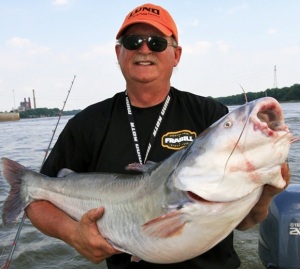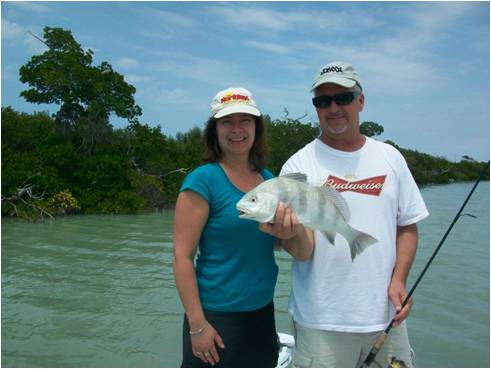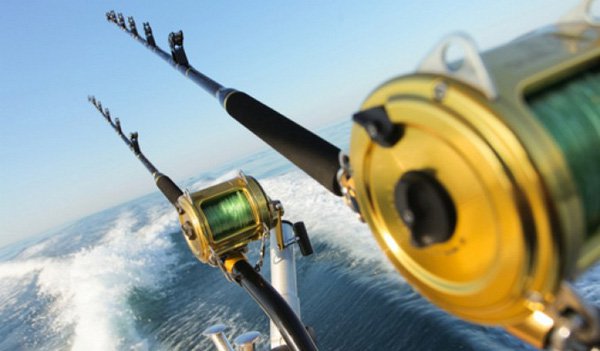Any well-seasoned angler would agree, the Adams is one of the most popular dry fly patterns of all time. Although the Adams origin dates back to the early 1930's; its originator is still unknown to the fly-fishing world today. From its beginning, the Adams went through a series of interesting transitions, beginning as a down-wing caddis imitation (closely resembling a wet fly) and ending up as one of the country's premier dry fly patterns. As the quality of hackle increased during the 1970's the Adams became a deadly dry fly back "east". The "western" version (the standard hen wing Adams we know today) was developed during the mid 1970's by adding one extra brown hackle to aid in better floatation on the swifter currents commonly found on "western" free-stone rivers. Along the way other variations were developed which include the Hair Wing Adams, Irresistible Adams, and of course this month's pattern the Parachute Adams. The parachute version has been "tweaked" a bit in the last few years and it is not uncommon to see the wing tied with orange or chartreuse calf hair instead of white. Whichever variety you prefer, the Adams will go down in history as one of the most consistent trout flies ever fished.
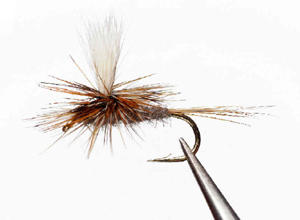
The Adams effectively imitates several different types of adult mayflies. It may be fished in a green drake hatch in a size 10 right down to tiny blue wing olive hatch in a size 22. The list goes on, pale morning duns, brown drakes, mahogany duns, tricos, red quills, etc., the Parachute Adams simply gets the job done. The Adams will fool many midge feeders in a size 24-26, in mist situations. One of the greatest advantages of this fly is the ability to see it in small sizes and high-glare conditions. Any serious angler should carry a large assortment of sizes and variations of Adams in their fly fishing arsenal.
As the 2000 season begins to unwind the baetis mayflies (blue duns, blue quills, and blue wing olives) will be the premier hatch of the autumn season. Wherever your fishing passion takes you, you'll likely experience good "dry fly action" and this month's pattern will be the ticket to your success.
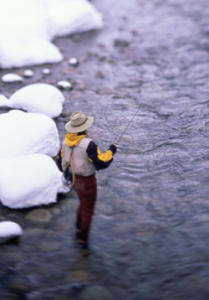
When fishing your #18 Parachute Adams one of many techniques may work well. Begin by using a 9 or 12 foot tapered leader terminating in 6X. If the water is real low, slow moving, or crystal clear, a longer leader or additional tippet may be required. Unfortunately there is a trade off ; the longer the leader the harder it is to turn over the fly. One effective method is the straight upstream presentation. As previously discussed in the last couple month's articles this tactic is advantageous because trout position themselves facing into the current and by sneaking up from behind your target reduces the chances of spooking or "putting the fish down". Probably the greatest advantage to this method is that your setting the hook back into the trout's mouth, which more times than not, guarantees a good hook up.
Another method is a downstream approach. This technique is deadly because the first thing the feeding trout sees is the fly. Once again the greatest challenge to a downstream attack is setting the hook. It is very easy to react prematurely and set the hook to early pulling the fly our of the trout's mouth. Don't get into a rush, pause for an additional second and allow the fish to turn down and close its mouth before setting the hook.
The most widely accepted application is the up and across cast. Deliver the fly 45 degrees upstream and mend the fly-line as the fly floats downstream. Let the fly float motionless, the fly should appear to be helpless in the current or in other words "drag-free". This technique is ideal because large areas of water can be methodically covered presenting the fly to as many trout as possible.
If you're in a heavy hatch, pick out one "riser" and cast to that specific fish. Casting to non-specific fish or "flock shooting" usually doesn't pay dividends. Start with the closest feeding fish and systematically work your way towards the head of the run.
September brings anglers alike a fly-fishing paradise that is unmatched for the remainder of the year. The air is cool and crisp and the "high-country" starts to see light dusting of snow. The aspens, cottonwoods and scrub oaks are blazing with color. The wind blows and leaves gently spiral into the stream floating on a seemingly endless journey downstream. Mid day trout sip tiny baetis mayflies along the rivers edge preparing for another winter season. Brown trout aggressively leap into the air sporting their magnificent spawning colors as Mother Nature lets them know it is now time once again for future generations. Surrounded by all of this serenity and beauty, one can help but to really appreciate just being alive. Life slows down a bit?the fish are a bonus. The hectic life at home and the office seem so trivial卆fter all, it will all be waiting there for you tomorrow. Time is precious, try to make it a point to fish more this fall.
 The Adams effectively imitates several different types of adult mayflies. It may be fished in a green drake hatch in a size 10 right down to tiny blue wing olive hatch in a size 22. The list goes on, pale morning duns, brown drakes, mahogany duns, tricos, red quills, etc., the Parachute Adams simply gets the job done. The Adams will fool many midge feeders in a size 24-26, in mist situations. One of the greatest advantages of this fly is the ability to see it in small sizes and high-glare conditions. Any serious angler should carry a large assortment of sizes and variations of Adams in their fly fishing arsenal.
The Adams effectively imitates several different types of adult mayflies. It may be fished in a green drake hatch in a size 10 right down to tiny blue wing olive hatch in a size 22. The list goes on, pale morning duns, brown drakes, mahogany duns, tricos, red quills, etc., the Parachute Adams simply gets the job done. The Adams will fool many midge feeders in a size 24-26, in mist situations. One of the greatest advantages of this fly is the ability to see it in small sizes and high-glare conditions. Any serious angler should carry a large assortment of sizes and variations of Adams in their fly fishing arsenal.
 When fishing your #18 Parachute Adams one of many techniques may work well. Begin by using a 9 or 12 foot tapered leader terminating in 6X. If the water is real low, slow moving, or crystal clear, a longer leader or additional tippet may be required. Unfortunately there is a trade off ; the longer the leader the harder it is to turn over the fly. One effective method is the straight upstream presentation. As previously discussed in the last couple month's articles this tactic is advantageous because trout position themselves facing into the current and by sneaking up from behind your target reduces the chances of spooking or "putting the fish down". Probably the greatest advantage to this method is that your setting the hook back into the trout's mouth, which more times than not, guarantees a good hook up.
When fishing your #18 Parachute Adams one of many techniques may work well. Begin by using a 9 or 12 foot tapered leader terminating in 6X. If the water is real low, slow moving, or crystal clear, a longer leader or additional tippet may be required. Unfortunately there is a trade off ; the longer the leader the harder it is to turn over the fly. One effective method is the straight upstream presentation. As previously discussed in the last couple month's articles this tactic is advantageous because trout position themselves facing into the current and by sneaking up from behind your target reduces the chances of spooking or "putting the fish down". Probably the greatest advantage to this method is that your setting the hook back into the trout's mouth, which more times than not, guarantees a good hook up.
